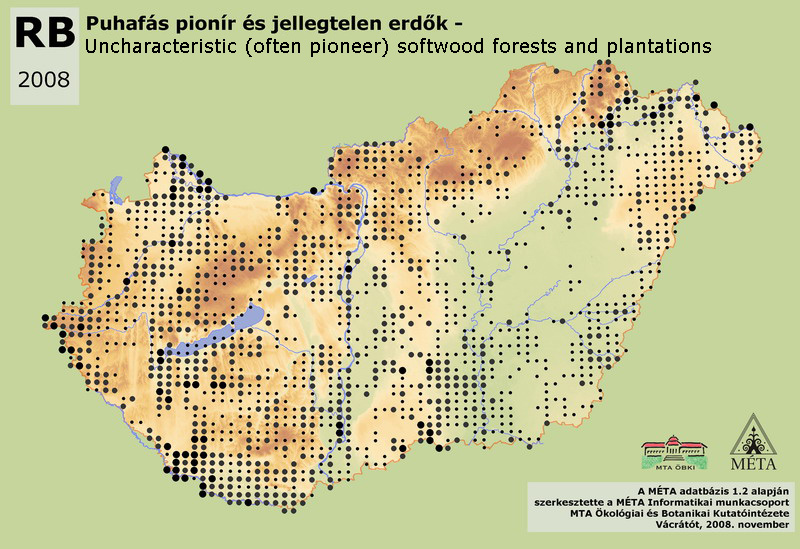MÉTA Program >>> Habitat distribution maps


RB – Uncharacteristic (often pioneer) softwood forests and plantations:
Softwood forests of native trees that mainly have poor herb layer and can not be classified to another natural habitat type [from J to N]. Plantations and spontaneous forest stands equally belong to this habitat type. Most often Salix and Populus species, Alnus glutinosa and Betula pendula consist these woodlands, furthermore Pinus sylvestris on the western edge of the country. Minimal closure of the woodland is 33%, and maximal proportion of hardwoods is 50%. The total area of the habitat is 45000 ha, occurring almost evenly in the country. It covers the largest area on Alföld (almost 20000 ha) and on Dél-Dunántúl (11000 ha). Its extension is smaller on Nyugat-Dunántúl (5000 ha) and on Kisalföld (6000 ha), most infrequent in the Dunántúli- and in the Északi-középhegység (2400 and 1600 ha). Basically it is a man-made habitat, occurring with the largest area on those lowlands, where the level of the groundwater is high (valleys of Duna, Tisza, Dráva and Rába, Belső-Somogy). Most infrequent on colline-submontane regions with closed forest cover (e.g. Zalai-dombság, Bakony, Vértes, Visegrádi-hegység, Börzsöny, Mátra, Bükk, Putnoki-dombság, Aggteleki-karszt, Sátor-hegység).
Molnár, Zs., M. Biró, J. Bölöni & F. Horváth (2008): Distribution of the (semi-)natural habitats in Hungary I.: Marshes and grasslands, Acta Botanica Hungarica 50 (Suppl): 59-105. >>> letöltés (5,4 MB, PDF)
MÉTA Program,
MÉTA Fotótár
MÉTA Élőhely-Ismereti Útmutató (ÉIÚ),
MÉTA Adatlap-Kitöltési Útmutató (AL-KÚ)
(C) MÉTA Informatika, 2005-2009,
MTA Ökológiai és Botanikai Kutatóintézete